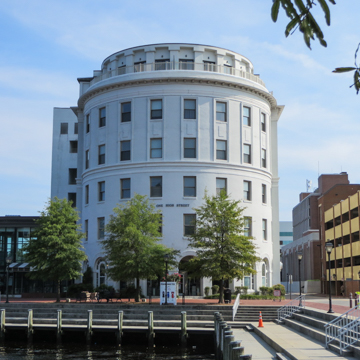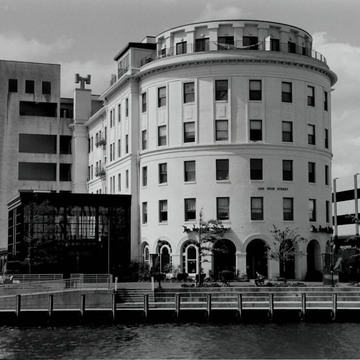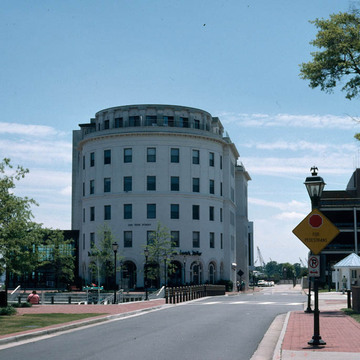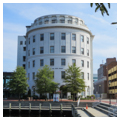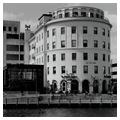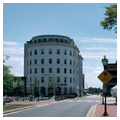Originally constructed as the passenger terminal and offices of the Seaboard and Roanoke Railroad, this building was prominently situated on the waterfront to ensure easy connections to Norfolk and Berkley via ferryboat as well as to offer convenient proximity to the railroad's warehouses. The Renaissance Revival design is distinguished by a semicircular bay supported by a ground-level arcade facing High Street. A two-story addition to the top of the building was constructed in 1914–1915. Following the removal of the Seaboard headquarters to Richmond in the late 1950s, the building was converted for use as Portsmouth City Hall (1958–1980). Subsequently it was renovated as a mixed-use residential and office building.
You are here
Seaboard Building
c. 1894, Seaboard and Roanoke Railroad architecture staff. 1908, renovation, Edward Overman. 1914–1915, addition. c. 1985, renovation. 1 High St.
If SAH Archipedia has been useful to you, please consider supporting it.
SAH Archipedia tells the story of the United States through its buildings, landscapes, and cities. This freely available resource empowers the public with authoritative knowledge that deepens their understanding and appreciation of the built environment. But the Society of Architectural Historians, which created SAH Archipedia with University of Virginia Press, needs your support to maintain the high-caliber research, writing, photography, cartography, editing, design, and programming that make SAH Archipedia a trusted online resource available to all who value the history of place, heritage tourism, and learning.






